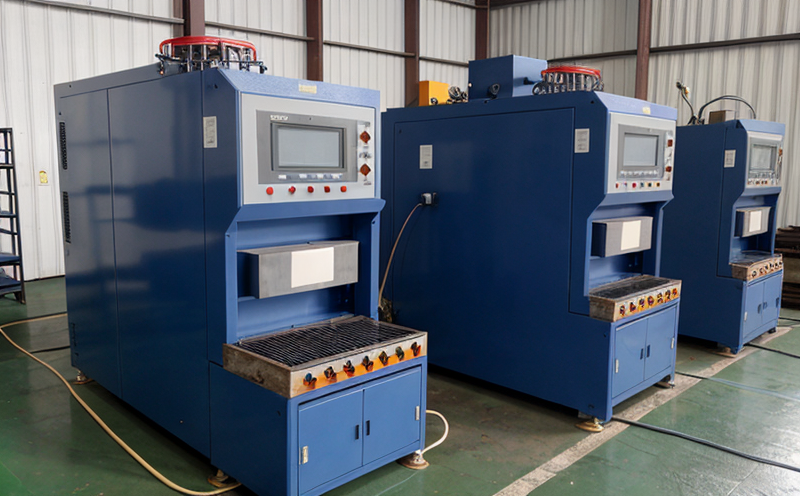ISO 1025 Manganese Ore Sizing Analysis Testing
The ISO 1025 standard is a globally recognized specification for the determination of particle size distribution in manganese ores. This test plays a crucial role in ensuring that raw materials meet specified quality standards, thus influencing product performance and consistency across industrial manufacturing processes.
Quality assurance in the manganese ore industry involves several key aspects such as particle size, grade, and purity. Proper sizing analysis is essential for optimizing production efficiency and ensuring compliance with international standards like ISO 1025. This testing method helps manufacturers to maintain consistent product quality by identifying any deviations from expected specifications.
During the ISO 1025 test procedure, a representative sample of manganese ore is prepared according to predefined protocols outlined in the standard. The sample must be homogeneous and free from contamination. Once prepared, it undergoes sieving using standardized sieves to separate particles into different size fractions.
The process typically involves drying the sample at specified temperatures followed by sieving through a series of progressively finer screens. Each screen retains particles above its designated mesh count while allowing smaller particles to pass through. The retained particles are then weighed and recorded, providing data on the distribution of particle sizes within the ore.
Accurate sizing analysis is critical for several reasons:
- To ensure consistency in product quality
- To optimize processing methods based on particle size distributions
- To comply with regulatory requirements set by international standards such as ISO 1025
Properly sized manganese ore particles contribute significantly to downstream processes, influencing factors like mixing efficiency, reactivity during smelting, and overall product performance. Understanding the particle size distribution allows manufacturers to tailor their production methods effectively.
| Application | Description |
|---|---|
| Manganese Ore Processing | Ensure consistent particle size for optimized smelting processes. |
| Product Quality Control | Identify deviations in particle size distribution to maintain product quality standards. |
| Regulatory Compliance | Meet international standards like ISO 1025 for accurate sizing analysis. |
The industry applications of this testing method extend beyond mere compliance; it also enables manufacturers to enhance product performance and reduce production costs by optimizing processes. By understanding the particle size distribution, companies can fine-tune their operations, leading to improved efficiency and reduced waste.
Competitive Advantage and Market Impact
Implementing ISO 1025 Manganese Ore Sizing Analysis Testing offers several competitive advantages. Firstly, it ensures that products meet stringent quality standards set by international regulations, which can be a differentiating factor in the market. Secondly, accurate sizing analysis helps manufacturers optimize their processes, leading to cost savings and improved productivity.
Compliance with global standards enhances brand reputation and trust among customers. By demonstrating adherence to internationally recognized specifications such as ISO 1025, companies can build a strong market presence. This not only attracts high-quality clients but also opens doors for international business opportunities.
In the manganese ore industry, where product consistency is paramount, accurate sizing analysis provides a clear competitive edge. It allows manufacturers to consistently deliver products that meet or exceed customer expectations, thereby fostering long-term relationships and loyalty. Additionally, by leveraging this testing method, companies can stay ahead of regulatory changes and market trends.
- Enhanced reputation
- Cost-effective production processes
- Better product performance
- Compliance with international standards
Use Cases and Application Examples
The ISO 1025 Manganese Ore Sizing Analysis Testing finds application in various scenarios within the industrial manufacturing sector. One such use case is during the initial stages of manganese ore processing, where accurate particle size distribution data can guide further processing steps.
- Smelting Optimization
- Product Quality Assurance
- Regulatory Compliance
In smelting processes, knowing the exact particle sizes ensures optimal performance. Smaller particles react more quickly and uniformly than larger ones, leading to better metal recovery rates. On the other hand, too fine a grind can lead to excessive energy consumption without significant benefits.
For product quality assurance, consistent sizing is crucial for maintaining uniformity across batches. This consistency ensures that every batch meets the required specifications, enhancing customer satisfaction and reducing returns or rejections.
In terms of regulatory compliance, adherence to ISO 1025 ensures that products are up-to-date with international standards. This not only helps in avoiding penalties but also builds a positive image among stakeholders.





